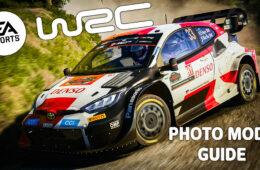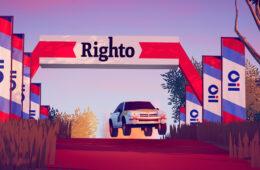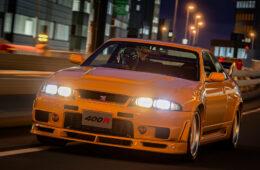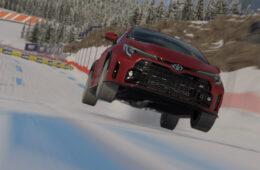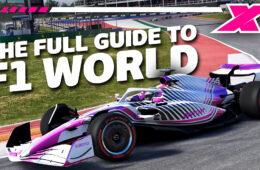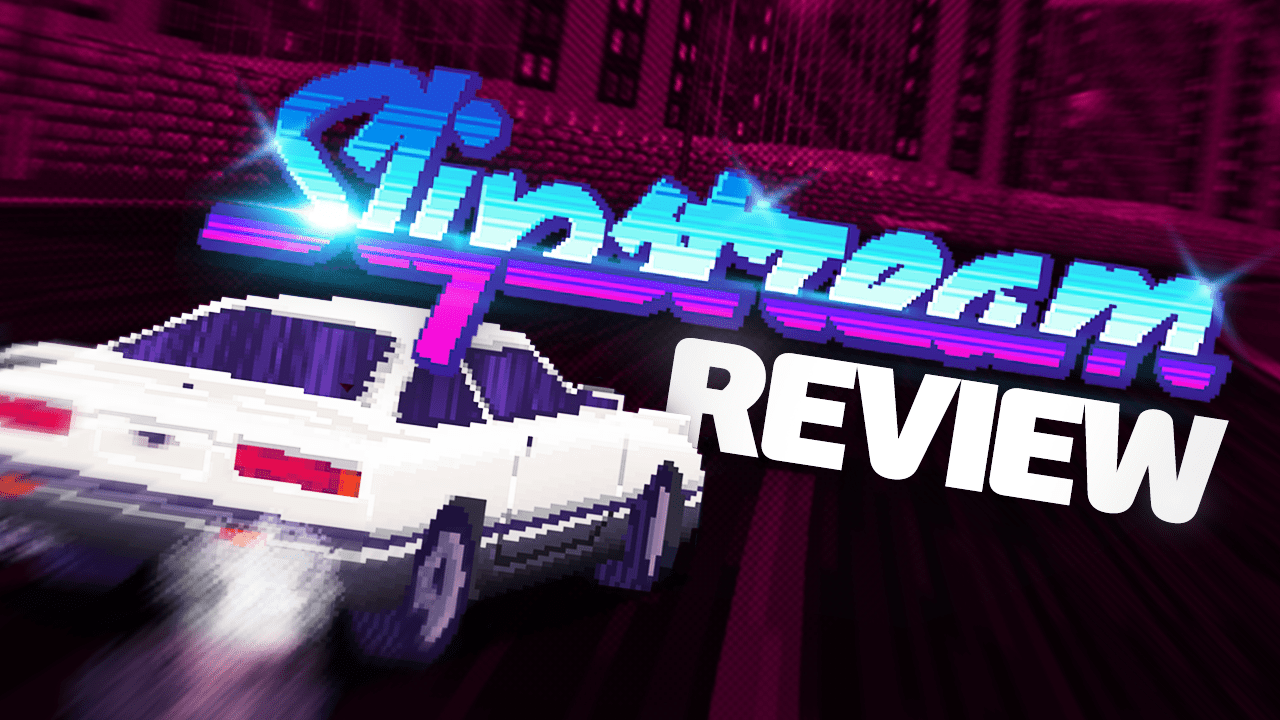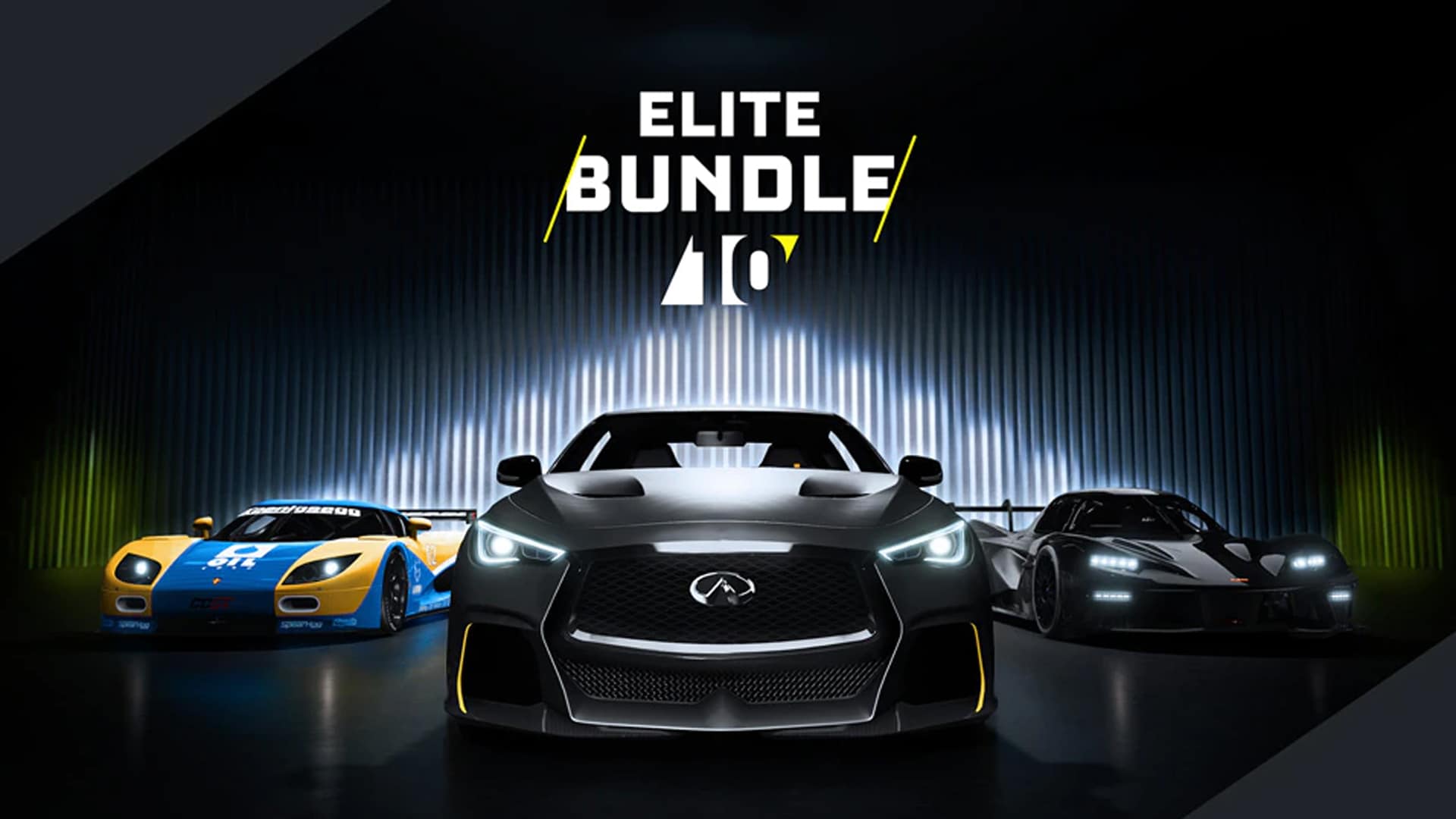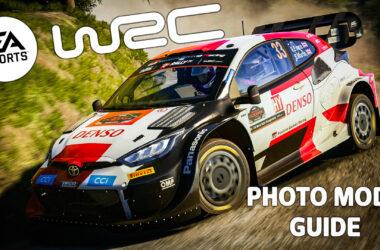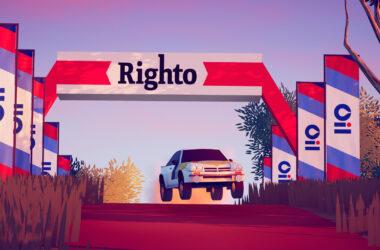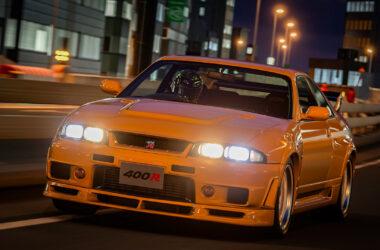When you see the 2D pixelated aesthetic, hear the synthwave soundtrack and experience the traffic-overtaking arcade-aping gameplay that makes up Splistream, what does it remind you of?
Those of a certain age will certainly say OutRun – heck, the press material references it on numerous occasions as the “closest you can get to a modern [interpretation]” – but I’m certain there will be a whole generation who instantly say Horizon Chase Turbo instead.
The truth is, while this modern-day release created by Brazilian one-person development team Sandro Luiz de Paula, aka ansdor, leans heavily on themes from both the 1980s Sega classic and the 2018 mobile and console game, it has its own inimitable style that does not need to piggyback on former glories.
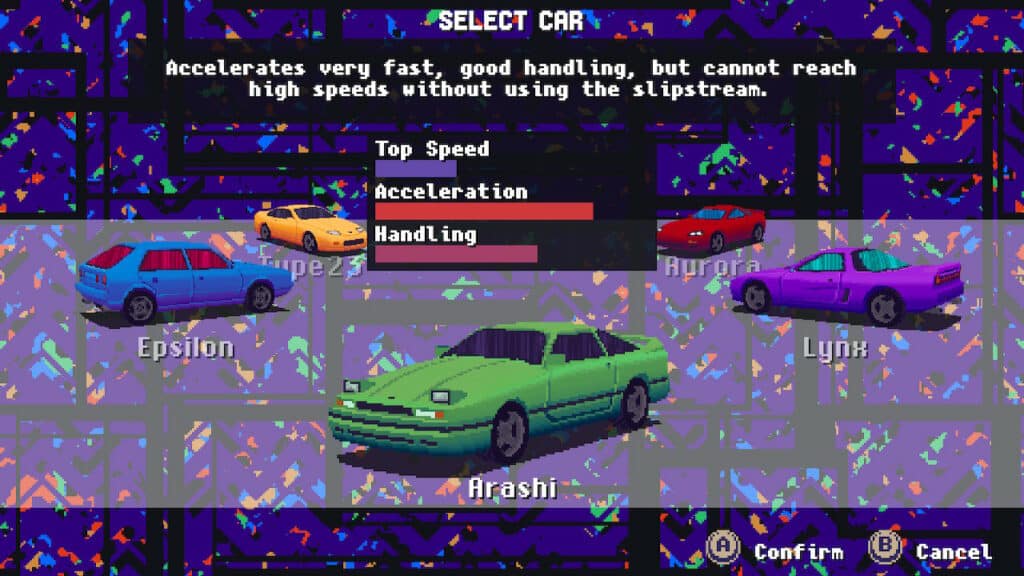
The basic concept is racing down a public road, weaving in and out of traffic, while trying not to crash. After each themed sectional environment, there’s a fork and driving down one side takes you to a new area. Reach the end, which is far from a 20-hour grind fest but a 15-minute blast, and you have effectively completed the game.
So far, nothing new, but where Slipstream differentiates itself is through the driving physics.
Using the D-pad, or analogue stick, you tap left or right, but smoothly drifting around a turn is far from simple. There is more depth to the handling that you may anticipate for a game of this ilk.
By default, power-sliding is a manual affair, releasing the throttle pedal, taping the brake, turning and then back on the gas – all the while avoiding slower-moving vehicles and finding the ideal line.
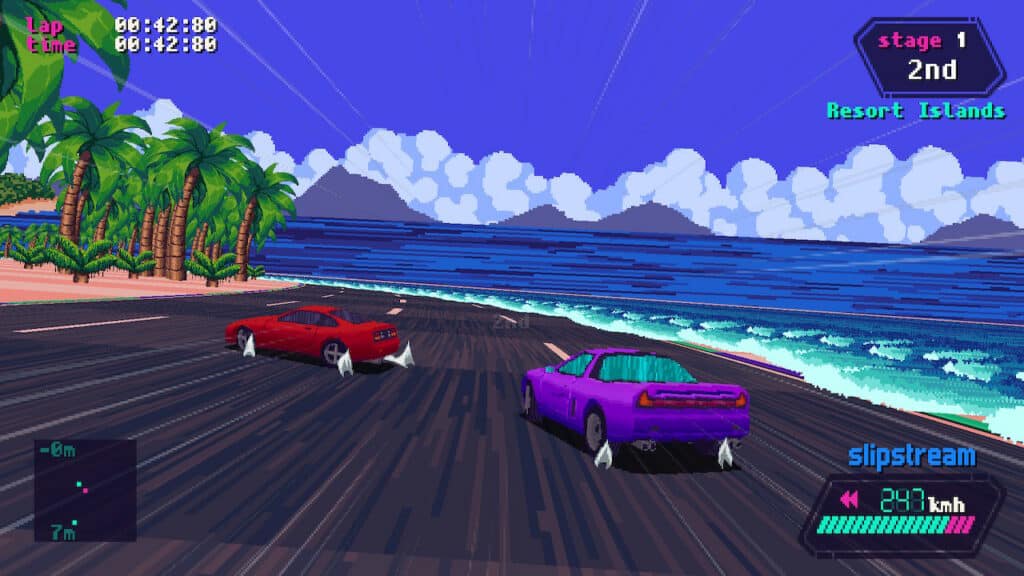
The process is nuanced and takes time to master. I don’t think I truly did in my playtime for this review. When you nail a corner, it’s satisfying, but all too often cornering is staccato, like an on/off light switch as opposed to a progressive drift.
There is also an ‘automatic’ drifting option. While this takes away a level of challenge and therefore a sense of achievement, it’s far more in keeping with the pick-up and play vibe. If you’d like to hear the soundtrack and enjoy the varied locations, I recommend trying this setting first.
There’s also, as you’ve probably guessed, a slipstreaming mechanic. Avoiding the traffic is essential, but so is using them to your advantage. Drop in behind a slow-moving car in a straight line and little visual indicators let you know you’ve just earned additional speed thanks to them cutting through the air for you.
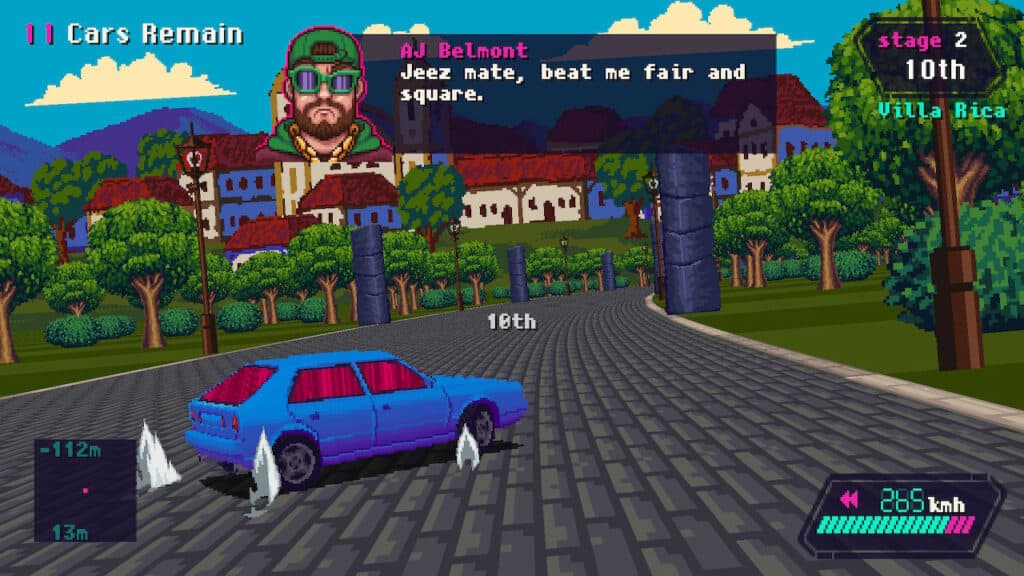
However, this feels a little hit and miss. There are times when you gain the slipstream effect from afar, other times not much happens.
Once you have ‘gained’ a slipstream, it’s almost as if you don’t need it again unless you hit something to rob you of momentum – as opposed to always hunting one down at every available opportunity.
All the while, each section of the main Grand Tour mode features several rivals. Finish behind them at the end of a stage too many times, and your race is over. They feel largely superfluous and their performance can be all over the shop, but ultimately provides something to aim for other than simply the clock.
The other gameplay-affecting dynamic that’s very much from the modern era is a rewind mechanic. First pioneered, in a racing game sense, by Alfa Romeo Racing Italiano, in Slipstream you tap the appropriate button before being treated to tracking lines and ‘REW’ insignia like an old VHS tape.
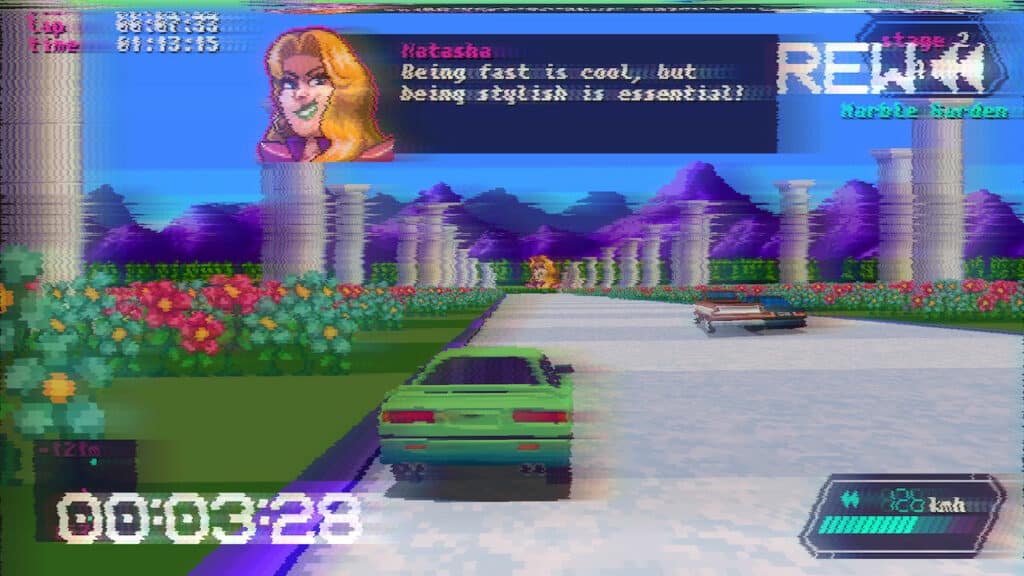
You’ll need it too, as mistiming a drift will result in your car rolling over and bouncing unceremoniously across the track. But more importantly, robbed of forward impetus.
It’s a lovely touch in a game that’s filled with rose-tinted nostalgia mixed with modern-day processes.
I personally love the vibrant splash of the menu design and the Kavinsky-inspired tunes or the 90s Japanese fictional cars with pop-up headlights and bright colours. The rock-solid frame rate helps too, even when in split-screen. The humdrum engine sounds, less so.
Once you’ve run through the Grand Tour several times, first to the end and then across each location and beating every rival, there’s Cannonball which is like GRID Legend’s Race Creator with fewer Aston Martins, allowing you to customise the race setup with sliders for the number of rivals and traffic volume.
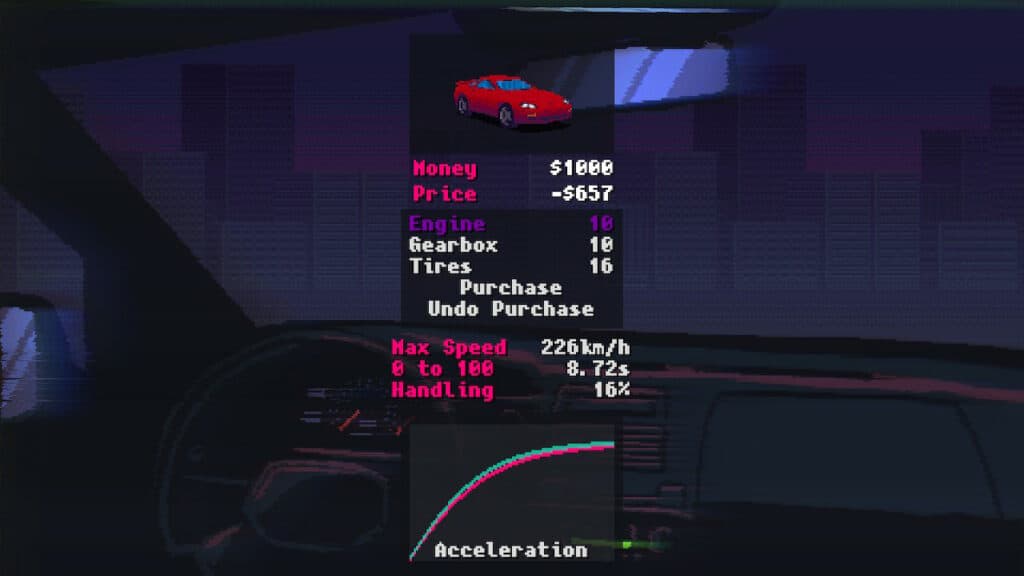
Grand Prix is similar to Grand Tour, but this time it’s broken down into three championships each with several back-to-back races, where you earn money to be spent upgrading your vehicle.
Running against a trafficless field and completing laps instead of point-to-point, if you lose your rhythm it can be hard to pick up the slipstream effect as you often find yourself in a bubble alone.
There’s even a Battle Royale mode. Ish. In all but name really, this is an elimination race where whoever is last at the end of each stage is struck off the entry list. Perhaps, to ratchet up the intensity, this could be every 30 seconds instead, or more than one vehicle knocked out at each stage end – it’s a little ponderous in its current form.
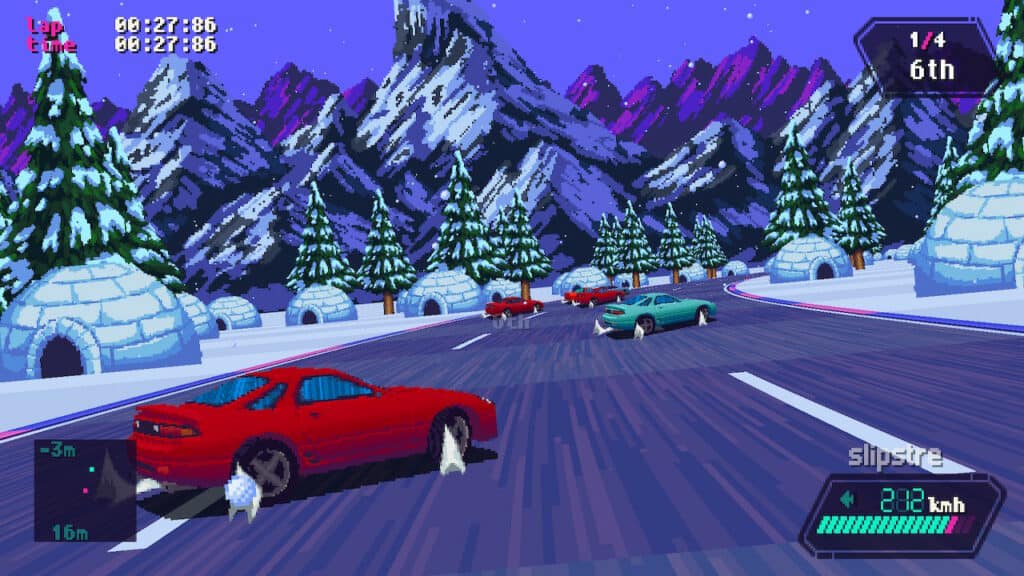
This all melds together with the challenging difficulty to deliver something that can be a little tricky to get into but pays off in the end. I still feel like while I enjoyed the testing handling model, it would be nice if its implementation was a little more plaint.
The 20 tracks and handful of cars are made to feel deeper than actuality by the wealth of game modes – a clever way of lengthening the appeal that would otherwise be fleeting. Despite this, there’s still a sense that more content wouldn’t go amiss.
But, this is an affordable title at under 10 pounds and dollars created by a solo developer, and to create something that is so distinct in a crowded retro scene does not go without merit.

| Developer | Sandro Luiz de Paula (ansdor) and BlitWorks Games |
| Release date | 7th April 2022 (Switch, PlayStation and Xbox – 2018 on PC) |
| Available platforms | Nintendo Switch, PlayStation 4, Xbox One and PC |
| Version tested | Nintendo Switch |
| Best played with | Joy-Con |
Full disclosure: A code for the game was provided by the publisher for review purposes. Here is our review policy.

